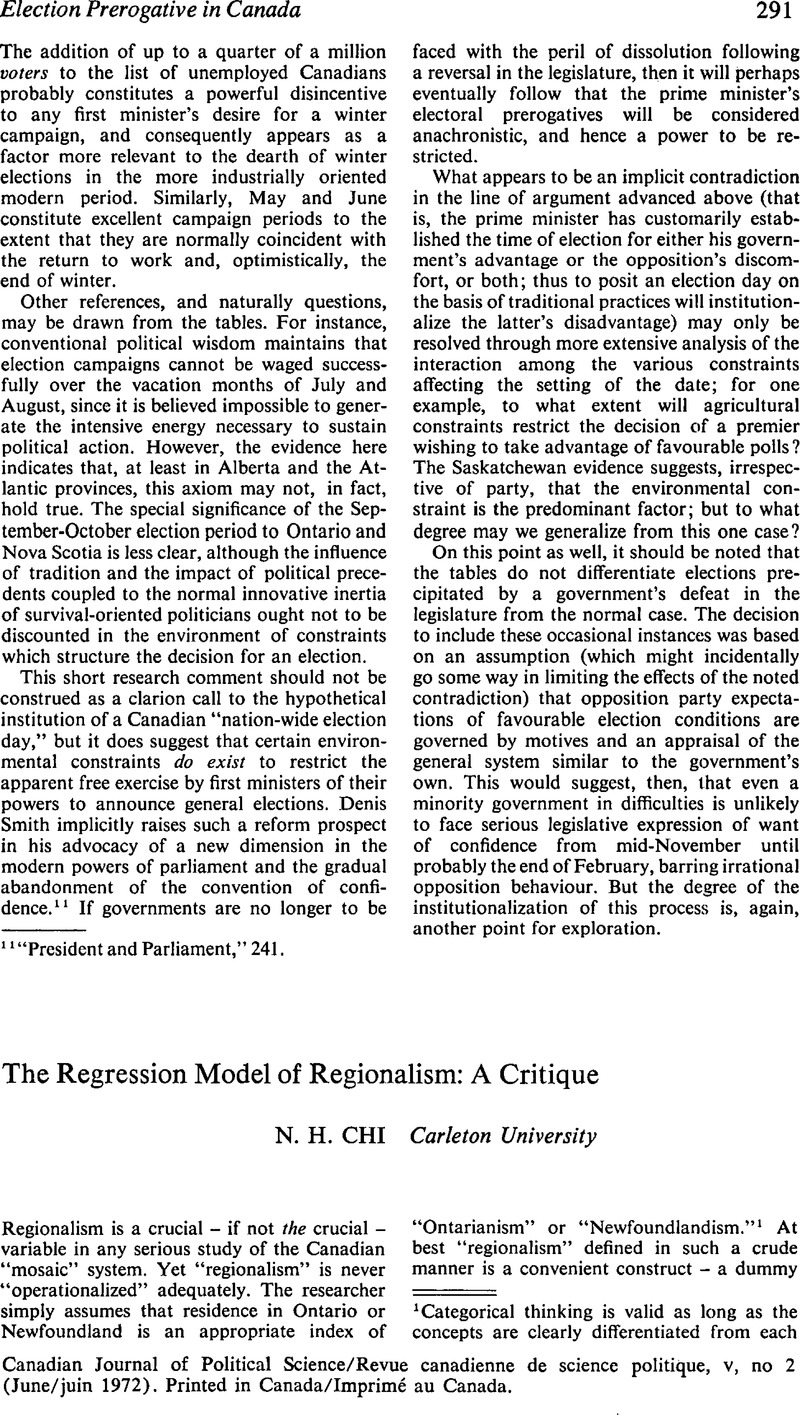Published online by Cambridge University Press: 10 November 2009

1 Categorical thinking is valid as long as the concepts are clearly differentiated from each other. Unfortunately, in modern life, where communication and interaction between individuals have reached a high level, the “boundaries” between most social and cultural categories have become less visible, thus, it is more valid to think in terms of “continua” rather than “categories.” For example, even sex – the most “categorical” concept – has been losing its “categorical” nature in the modern “unisex” environment. Instead of categorizing the people into “males” and “females,” one should start to conceptualize “sex” in terms of degree of “maleness” or “femaleness” or whatever it is. Similarly, regional categories may be less valid now than before as a result of the rise of the “global village” (see McLuhan, Marshall, War and Peace in the Global Village [New York, 1968]).Google Scholar
2 For an introduction to those multi-variate techniques, see Myers, J.L., Fundamentals of Experimental Design (Boston, 1966)Google Scholar; Coleman, James S., “Multivariate Analysis,” Introduction to Mathematical Sociology (New York, 1964), chap. 7, 189–240Google Scholar; Land, Kenneth C., “Principles of Path Analysis,” in Borgotta, E.F., ed., Sociological Methodology 1969 (San Francisco, 1969)Google Scholar, chap. 11.
3 Irvine, William P., “Assessing Regional Effects in Data Analysis,” a paper originally presented at the Quebec Colloque, Oct. 1970Google Scholar, and subsequently selected for publication in this JOURNAL, IV, no 1 (March 1971), 21–4.
4 For a short introduction to regression analysis, see Rozeboom, William W., “Statistical Regression and the Theory of Prediction,” Foundations of the Theory of Predication (Homewood, Ill., 1966), chap. 4, 58–183.Google Scholar See also Ezekiel, M. and Fox, K.A., Methods of Correlation and Regression Analysis (New York, 1959).Google Scholar
5 Rozeboom, “Statistical Regression,” 145.
6 The demonstration of equation 3 proceeds as follows:

Thus, ![]()
On the other hand, ![]()
But ![]() since βk is independent of scaling units.
since βk is independent of scaling units.
Thus, ![]()
Hence, ![]()
7 The issue Z-form versus X-form is a controversial one. See Wright, Sewall, “Path Coefficients and Path Regressions: Alternative or Complementary Concepts?” Biometrics, XVI (1960), 189–202CrossRefGoogle Scholar; Tukey, John W. “Causation, Regression, and Path Analysis,” in Kempthorne, Oscaret al., eds., Statistics and Mathematics in Biology (Ames, Iowa, 1954)Google Scholar, chap. 3; Blalock, Hubert M., “Causal Inferences, Closed Populations, and Measures of Associations,” American Political Science Review, LXI, no 1 (March 1967), 130–6.CrossRefGoogle Scholar
8 See Ward, Robert E., ed., Studying Politics Abroad (Boston, 1964).Google Scholar
9 Meehan, Eugene J., The Theory and Method of Political Analysis (Homewood, 1965), 157–60.Google Scholar
10 The most serious theoretical shortcoming of his model is its inability to delineate the cause from the effect. In his hypothetical example, one may ask whether “integration” is the cause or the effect of bilingualism. Professor Irvine implicitly assumes that the former is the cause of the latter without providing any proof to validate such an assumption.